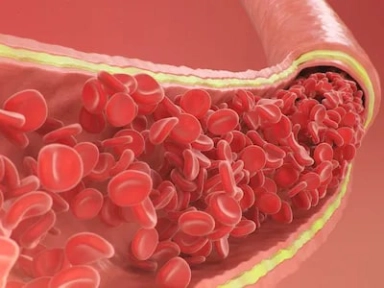{
event: "article_read",
name: `Prognostic impact of achieving LDL cholesterol guidelines`,
author: ``,
tags: `Dyslipidemia`,
publication_date: ``,
interaction_type: "content"
}
Prognostic impact of achieving LDL cholesterol guidelines
Prognostic impact of achieving guideline-recommended LDL-C target in secondary prevention: A real-world study
This real-world study of PMI patients emphasizes the importance of achieving guideline-recommended secondary prevention goals of LDL-C <55 mg/dL and ≤50% from baseline to reduce Mace.
Main Takeaway
- The incidence of Mace was 12.9% and 23.7% in the group attaining the 2019 goals (LDL-C <55 mg/dL) and in the group attaining 2016 goals (LDL-C <70 mg/dL), respectively.
Why This Matters
- The 2019 ESC guidelines recommend a more ambitious target (to achieve LDL-C <55 mg/dL and to reduce it by ≥50% from baseline) than the previous guideline version (LDL-C <70 mg/dL or reduced ≥50% from baseline).
- Data on the reduction of CV events in patients attaining the 2019 ESC goals are lacking in real-world population.
- This study aimed to determine the risk of Mace during follow-up in PMI patients according to the achievement of the guideline-recommended goals in terms of LDL-C reduction.
Study Design
- This was a retrospective analysis of a monocentric observational registry that prospectively enrolled patients hospitalized for ST segment elevation MI and followed-up in PMI ambulatory between January 2011 and February 2019.
- Clinical and demographic data were extracted from digital database, and the clinical events that occurred during follow-up were obtained by telephone interviews or clinical records.
- Endpoints: Mace defined as all-cause death, non-fatal MI, non-fatal stroke, and unplanned revascularization
- LDL-C was collected at baseline and at 1, 6, and 12 months after the events. To define the achievement of target goals, the lower value was collected at follow-up.
- Kaplan-Meier analysis and log-rank test were conducted for comparing patients who achieved LDL-C <55 mg/dL and ≤50% from baseline (group 2019) versus those who achieved LDL-C <70 mg/dL or ≤50% from baseline (group 2016).
- Continuous variables are presented as medians (interquartile ranges).
Key Results
- A total of 1,201 patients were included in the study (median age: 63 [54–72] years; female: 23%; hypertension: 56%; diabetes: 17%; smokers: 38%).
- Baseline LDL-C was 123 (97–148) mg/dL; at follow-up, median LDL-C was 63 (52–78) mg/dL and was significantly reduced from baseline (P <0.0001).
- Between 6 and 12 months, 83% of patients were treated with statins alone (73% with high intensity) and 17% with the addition of ezetimibe.
- In total, 828 patients (69%) achieved the 2016 target, whereas 270 patients (22.5%) also achieved the 2019 target. Median follow-up was 60 (40–77) months.
- Mace incidence was 12.9% and 23.7% in group 2019 and group 2016, respectively (HR = 0.61, 95% CI: 0.42–0.88; P log rank = 0.0087, number needed to treat = 9).
CI, confidence interval; CV, cardiovascular; ESC, European Society of Cardiology; HR, hazard ratio; LDL-C, low-density lipoprotein cholesterol; MACE; major adverse cardiovascular event; MI, myocardial infarction; PMI, post myocardial infarction.
- Casula M, Taietti I, Galazzi M, Zeqaj I, Fortuni F, Cornara S, et al. Prognostic impact of achieving LDL cholesterol guidelines-recommended target in secondary prevention: a real-world study. ePoster presented at the European Society of Cardiology (ESC) conference, August 27–30, 2021. [Abstract]34238023.10.1002/clc.23623. PMID: 34089263.
Related articles
MAT-BH-2200044/v2/Jan 2024


.webp/jcr:content/Lipid-lowering-therapy-thumb%20(2).webp)

.webp/jcr:content/Evaluation-of-lipid-management-following-ACS-thumb%20(1).webp)